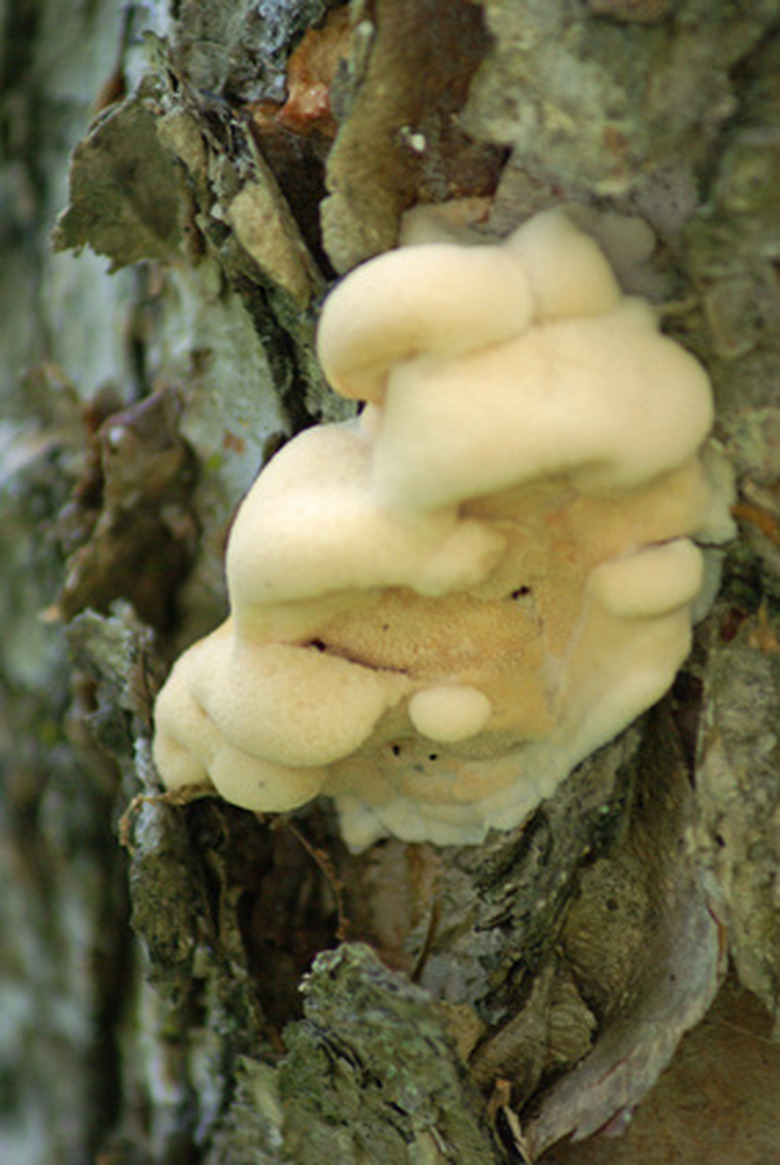How To Identify Tree Fungus
Things Needed
- Pruning shears
- Magnifying glass
- Shovel
Tree fungus is one of the major causes of a tree's decline and eventual death. Tree fungi may infect a tree through open wounds in the tree's bark or due to unusually wet weather conditions. You may not notice that a tree is infected with fungus until the canopy begins to decline. Once a tree exhibits signs of poor health, you must quickly diagnose the fungus problems if you want to restore the tree to good health.
Step 1
Determine your tree's species. Some fungal diseases are more prominent in certain species of trees. For example, oak leaf blister primarily affects oak trees, guignardia blotch of aesculus is a major problem for buckeye and horse chestnut trees, while frogeye leaf spot is a minor problem for crabapple trees.
- Tree fungus is one of the major causes of a tree's decline and eventual death.
- You may not notice that a tree is infected with fungus until the canopy begins to decline.
Step 2
Contact your county extension service. Agents with your nearest extension office will be aware of which fungal diseases have spread into your area and which have not. Knowing which fungal diseases are problems for your geographic location will help you to narrow your field of candidates and make identifying the disease simpler.
Step 3
Prune an infected branch from a tree using a pair of hand shears. An infected branch will contain symptoms of many types of fungal diseases.
Step 4
Examine the leaves of the branch beneath a magnifying glass. Many types of fungal infections leave symptoms on the leaves of a tree that range from a powdery white coating to yellowing, browning, black spots, raised bumps and blisters. If your tree's leaves and twigs are covered with a dusting of powder, the tree is suffering from powdery mildew. Brown, raised pimples with purple borders are a type of leaf spot. Under a magnifying glass you will be able to see that the raised pimples are actually pockets of spores. Leaf blisters are large, raised spore pockets that are yellow-green in color.
- Contact your county extension service.
- Under a magnifying glass you will be able to see that the raised pimples are actually pockets of spores.
Step 5
Examine the wood of the branch that you have cut for signs of fungal infection that may include cankers, fungus growing beneath the bark, or a sticky resin that will coat the twigs. One fungus that causes all of these symptoms is armillaria root rot. The fungus will cause cankers by growing between the bark of the tree and the wood. This will kill the bark and cause it to peel back, creating the canker.
Step 6
Look over the trunk of a tree for signs of fungal infection that may include cankers, oozing resin, fungus beneath the bark, a stained color present in the heartwood of the tree, or external growths. Certain signs of infection are specific indicators of the type of fungus your tree may be infected with. For example, Indian paint fungus will produce woody, hoof-shaped conks, which are external growths. The fungus will also stain heartwood a rusty brown color. Armillaria root rot will also produce cankers on the trunk of a tree as well as causing a tree to ooze resin and eventually become hollow.
- Examine the wood of the branch that you have cut for signs of fungal infection that may include cankers, fungus growing beneath the bark, or a sticky resin that will coat the twigs.
Step 7
Look over the ground around a tree's trunk. Some fungal diseases may be present in the soil. If a fungus is present in the soil, it will produce mushroom-shaped fruiting bodies that will pop up throughout the drip line of the tree. For example, yellow-colored mushrooms that appear in the fall around the base of a tree are a sign of honey mushroom fungus.
Step 8
Dig around the base of a tree with a shovel to uncover the root system. Trees that are infected with root rot fungus such as armillaria root rot and shoestring root rot will have mycelial threads. The color and shape of the threads is an indicator of the type of fungus in the roots. For example, shoestring root rot produces black, stringy threads, while armillaria root rot may produce mycelial in white, fan-shaped threads.
- Look over the ground around a tree's trunk.
- If a fungus is present in the soil, it will produce mushroom-shaped fruiting bodies that will pop up throughout the drip line of the tree.
Tip
Take photos of your tree's symptoms and take them to your county extension agent to confirm your diagnosis.
